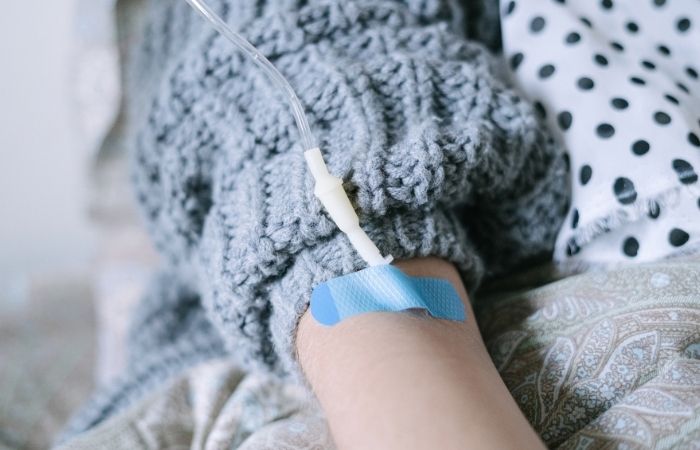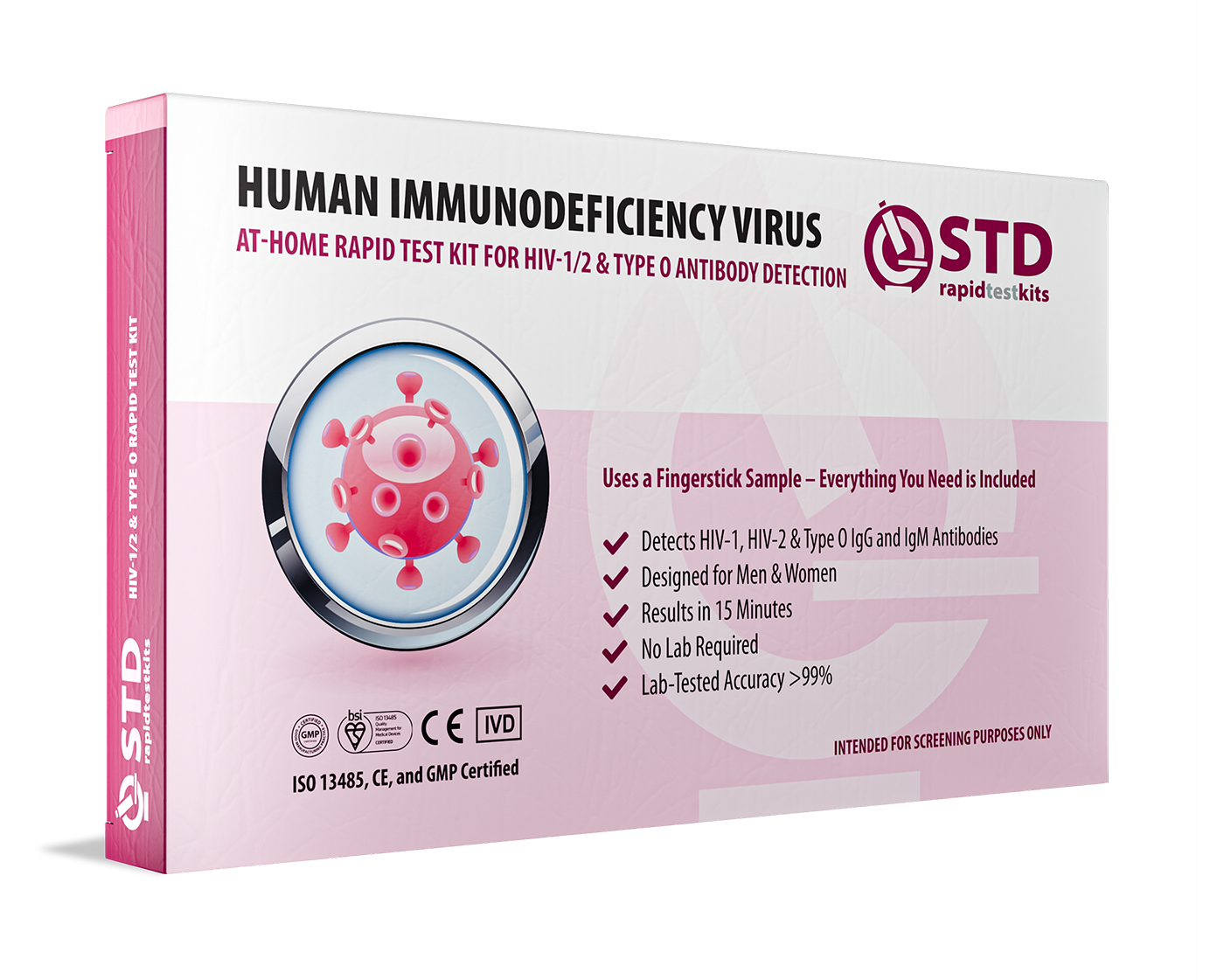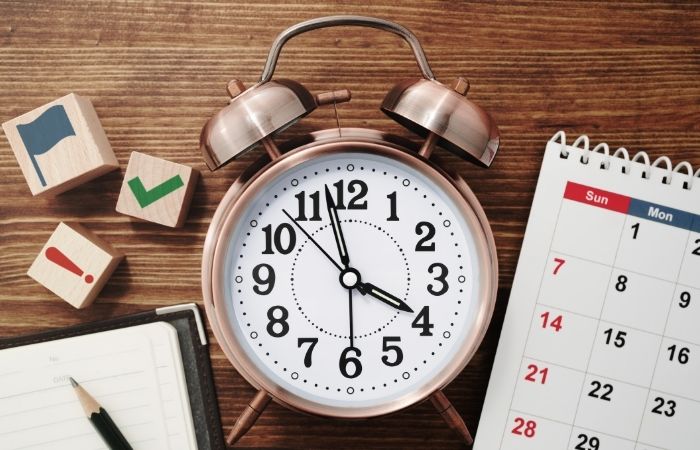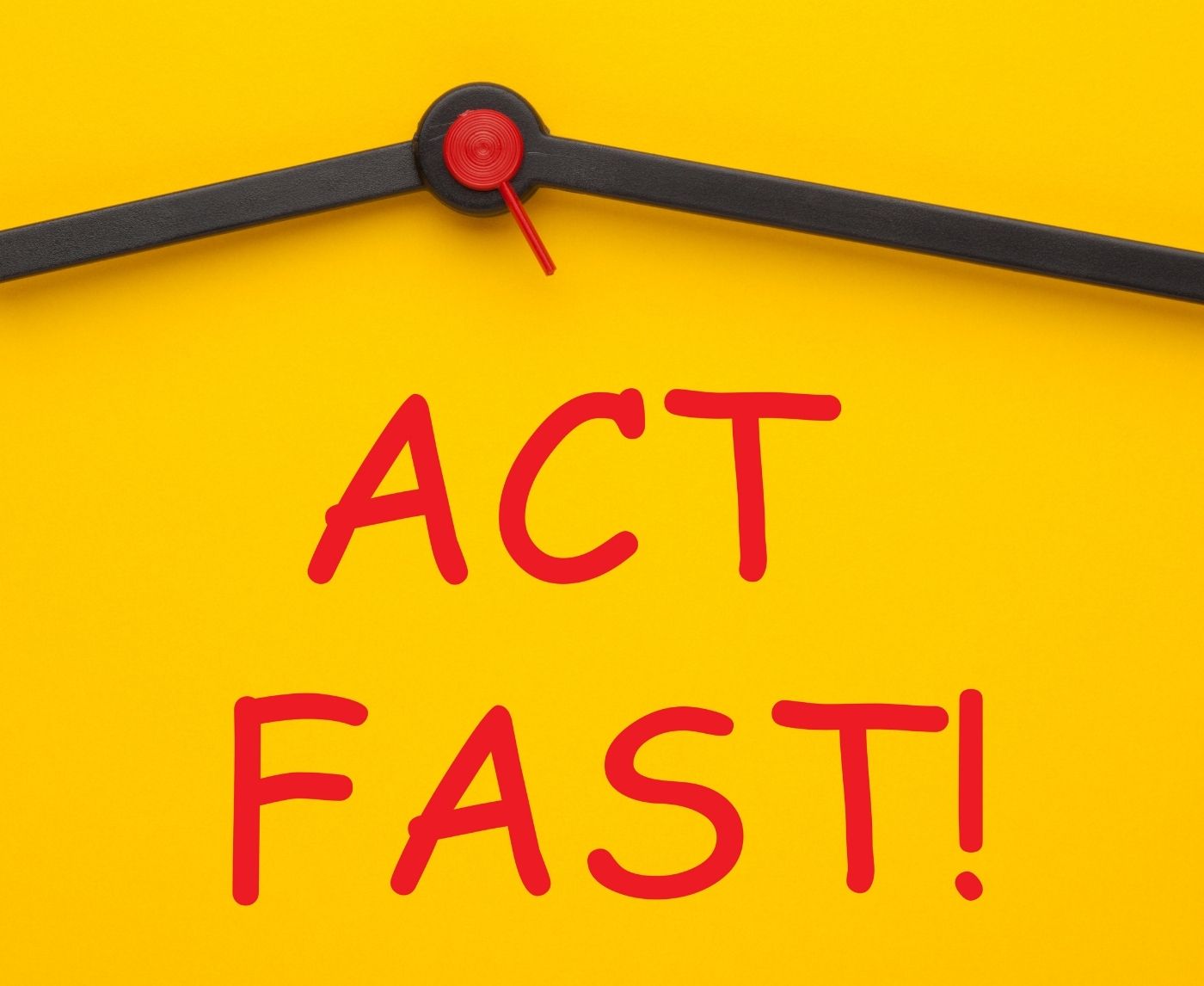Quick Answer: Early HIV treatment can protect the immune system, but only if the virus is caught fast. At-home tests let you act quickly, but you may still need follow-up testing to confirm results and protect long-term health.
Who This Article Is For (And Why It’s Urgent)
This is for you if you've ever had a condom slip mid-thrust and wondered if it was enough to cause damage. If you’ve hooked up, then replayed every second while waiting for test results. If you're in a new relationship and both of you "think" you’re clean but haven’t tested in months. If you're on PrEP, but missed a dose and now feel off. If you’re just scared.
You don’t need to have symptoms to worry about HIV. In fact, many people don’t feel a thing when their body is under viral attack. That’s the trap. HIV doesn’t always scream, sometimes it whispers, hides, waits. And if you’re relying on at-home testing to monitor your status, understanding the science of detection and timing is critical to making smart choices. The study from Amsterdam makes it clear: you have a window. Use it.
The Study That’s Shifting Everything: Starting ART in Days, Not Weeks
Researchers at Amsterdam UMC recently released data showing what happens when people diagnosed with HIV start antiretroviral therapy (ART) just days after infection. In the study, they closely monitored participants over the course of three years. Initially, things looked great. The immune system, especially the monocyte markers that signal inflammation and response, appeared nearly normal at the six-month mark. But by year three, those same markers started to deteriorate, even though the viral load was suppressed by medication.
What does that mean? Essentially, early treatment helps, but it doesn’t guarantee full immune recovery. The virus still alters the body in subtle ways. According to the lead researcher, this points to how insidious HIV is, even in its earliest stages, it embeds itself deeply. And unless treatment starts nearly immediately after infection, some damage is inevitable. But here’s the catch: most people don’t even know they’re infected until weeks later. That’s where testing, especially early and repeat testing, comes in.

People are also reading: Why That Rash Won’t Go Away, And Might Be Syphilis
How Soon Can HIV Be Detected? Timing Is Everything
HIV doesn’t follow a set script. Some people may develop flu-like symptoms within a week. Others feel fine for months. That’s why timing your test matters. The virus needs to reach a certain level in your body to show up on a test. This period is called the “window period,” and depending on the type of test, it can vary widely. Here’s what that looks like in practice:
| Test Type | Detects | Earliest Detection | Best Accuracy |
|---|---|---|---|
| Antibody-only (Rapid Fingerstick) | Body’s immune response | 3–12 weeks | 12+ weeks |
| 4th Gen (Antigen/Antibody combo) | Viral protein + immune response | 2–4 weeks | 4–6 weeks |
| HIV RNA (NAAT) | Virus itself (viral RNA) | 7–14 days | 14–21 days |
Figure 1. HIV detection timelines by test type. Always consider a retest depending on exposure date and test method.
If you’re using an at-home rapid HIV test, you’re likely relying on antibody-only detection. These are excellent for routine screening and peace of mind, especially if it’s been more than three months since possible exposure. But if you’re testing in the days or weeks immediately after a high-risk encounter, that same kit might give you a false sense of security.
It’s not about the test being bad. It’s about biology needing time. And if the Amsterdam study shows anything, it’s that those first days are gold. That’s when starting treatment can shift the immune outcome. So if there’s even a chance of recent exposure, test again, ideally with a different method or at a later window.
Check Your STD Status in Minutes
Test at Home with RemediumHIV Rapid Test Kit

 For Men & Women
For Men & Women Results in Minutes
Results in Minutes No Lab Needed
No Lab Needed Private & Discreet
Private & DiscreetOrder Now $33.99 $49.00
Real Talk: What It Feels Like to Test Too Early
Jamal, 28, remembers the night clearly. He was traveling abroad, had a few drinks, met someone. They used protection, mostly. Two weeks later, he felt run-down. Achy, flushed, tired. He took an at-home test. Negative. Then another. Still negative. It wasn’t until he returned home and visited a clinic for a 4th generation test that he learned the truth: he had tested too early. “I wanted to believe the at-home test was enough,” he says. “But deep down, I knew something was off.”
Jamal’s story isn’t rare. It’s textbook. Many people mistake early HIV symptoms for a cold, a bad week, anxiety. Or they do what he did, test too soon, see a negative result, and stop worrying. But HIV doesn’t care about our timelines. It has its own. That’s why understanding window periods and testing twice if needed is part of taking care of yourself, not a sign of paranoia.
If you’re panicking, remember: it’s okay to feel that way. Just don’t stop at the first test. Follow up. Confirm. The people who catch HIV early enough to start treatment in that golden period? They often did so because they trusted their gut and kept checking.
Where At-Home Testing Fits In (And Where It Doesn’t)
At-home tests are powerful. They put control in your hands, reduce shame, and let you get answers without sitting in a cold clinic waiting room. But they’re not magic. They come with limitations, and understanding those can help you use them smarter, not abandon them altogether.
Here’s the deal: if it’s been at least 12 weeks since your last possible exposure and you test negative with an FDA-approved at-home HIV test, you can feel confident in the result. That test is measuring your body’s immune response, and by then, it’s reliable. But if your exposure was recent, say, last weekend, and you’re testing to “get ahead of it,” you may be acting too soon. The test simply can’t detect what your body hasn’t built antibodies for yet.
This doesn’t make at-home kits useless. It just means they work best in two scenarios: as part of routine screening, and as a follow-up after potential exposure. Think of them as checkpoints in a longer road, not the finish line. And in many cases, they’re the first step toward real answers, especially when they lead someone to clinic-based confirmatory testing or early treatment.
Let’s break that down with another table:
| Testing Scenario | Best Approach | At-Home Test Role |
|---|---|---|
| More than 12 weeks since risk | At-home test (antibody) valid | Use for peace of mind or routine check |
| 2–6 weeks since risk | 4th Gen or RNA test preferred | Use at-home as a start, but retest later |
| Less than 10 days since risk | Clinic-based PEP or early care needed | Wait before testing; see provider for options |
Figure 2. Matching your testing method to timing after exposure.
If your exposure is very recent, especially within 72 hours, you might even be eligible for PEP (post-exposure prophylaxis), a medication regimen that can prevent HIV infection if started in time. That’s not something a test kit can offer, but a test result down the line might help determine if it worked.
The takeaway? Testing at home gives you agency. Just make sure you understand what the test can (and can’t) tell you, and don’t rely on one test alone to guide your future.
Why Testing Early Still Matters, Even if It’s Inconclusive
Let’s go back to that Amsterdam study. The people who benefited the most from early treatment weren’t waiting for symptoms. They were tested proactively, often as part of high-risk monitoring or regular screening in sexual health clinics. That kind of proactive approach is what at-home testing can mimic at scale. It makes screening frequent, discreet, and stigma-free.
But there’s a hidden power in early testing, even if it doesn’t give you a definitive answer. Testing tells your brain: “I’m paying attention.” It shifts your focus. It can prompt a second test at the right time. It gets you on a schedule. It moves you from fear into action.
Mari, 24, started testing after a hookup that made her uneasy. Her first test was negative. So was the second. But by the time she got to the third one, taken nearly three months later, she felt calmer. “I wasn’t obsessing over it anymore,” she said. “I had information. I had a plan.”
That’s the sweet spot. Early testing opens the door to long-term awareness. It’s not about catching HIV in the first 48 hours. It’s about establishing a habit that protects you long after the adrenaline of fear wears off.
How Often Should You Test for HIV?
There’s no one-size-fits-all answer, but here’s a general rule: if you’re sexually active with multiple partners or in a non-monogamous relationship, testing every 3–6 months is smart. If you’ve had a known exposure, or symptoms that match early HIV, you’ll want to test as soon as possible, then again at the 4- to 12-week mark.
Even one-time encounters can justify repeat testing if you don’t know the other person’s status. That’s not shame. That’s reality. And while home testing makes this process simpler, it doesn’t mean you can skip the timing rules.
Let’s reframe testing not as a chore, but as part of your sexual health rhythm, like brushing your teeth after a night out. You wouldn’t skip it just because your breath “seems fine.” You do it because it’s smart. HIV testing deserves the same respect.
If you’ve recently tested and want to make sure you're in the clear, consider using a Combo STD Home Test Kit that checks for multiple infections at once. That way, you’re covering all the bases, not just HIV.
What If You Already Have HIV? You’re Not Alone
Learning you’re HIV positive is never easy, but early diagnosis changes everything. With modern ART regimens, people with HIV can live long, full lives, and many reach a point where the virus is undetectable and untransmittable to others (known as “U=U”). But that journey starts with testing.
Even if your first positive result comes from an at-home kit, it’s enough to push you toward the next step: confirmatory lab testing, starting medication, and connecting to care. Every journey is different. What matters is beginning it.
Early treatment won’t erase every effect of HIV, as the Amsterdam study showed. But it can protect your immune system, lower inflammation, and reduce long-term complications. It also gives you peace of mind, not just about your own health, but about how you show up for partners, too.
So if you’ve been avoiding testing because you’re afraid of the answer, remember: the answer might actually be the beginning of your control, not the end of it.
What Stops People From Testing, And How to Break That Cycle
There’s a reason millions of people delay or avoid testing entirely: fear. Fear of the result. Fear of what it says about them. Fear of being judged by a doctor, a pharmacist, a partner. For some, it’s logistics, no nearby clinic, no transportation, no privacy. For others, it’s emotional. The “what if” feels louder than the facts.
But avoiding testing doesn’t protect you from reality, it just postpones your power to respond. Every day you delay is a day you don’t have answers. And if early treatment really does protect your immune system in those first critical weeks, as the Amsterdam researchers suggest, then waiting isn’t neutral. It’s costly.
That’s why at-home testing matters. It lowers the barrier. You don’t have to explain yourself to anyone. You don’t have to risk being seen at a clinic. You don’t even have to leave your house. The kit arrives discreetly. You prick your finger. You wait a few minutes. You get a result. That’s it.
And if that result is positive? You’re not alone. You’re not doomed. You’re not dirty. You’re just someone who now has information, and with that comes the chance to protect yourself and others.
Let’s Talk About Window Periods, Again
This concept is so important it’s worth revisiting. A test’s “window period” is the time between when someone is exposed to HIV and when a test can reliably detect it. During that time, a person may already be infectious, but still test negative. That’s where false confidence can creep in. And it’s why so many experts recommend testing more than once after a potential exposure.
Let’s walk through a typical timeline:
| Days Since Exposure | What’s Happening | Recommended Action |
|---|---|---|
| 0–3 days | Virus may begin replicating | PEP may be an option, seek immediate care |
| 4–10 days | RNA levels start rising | Too early for antibody tests; RNA testing might detect |
| 10–21 days | 4th Gen tests may detect HIV | Test with lab-based 4th Gen or NAAT if possible |
| 22–90 days | Antibodies develop | At-home rapid tests become more reliable |
Figure 3. Timeline of HIV infection and test detection reliability. Always confirm early negatives with a second test later.
The people in the Amsterdam study had a very small window between exposure and treatment. In the real world, most of us don’t realize we’re at risk until it’s too late for that kind of timing. But that doesn’t mean testing later is useless. It just means your strategy may need to involve two or even three tests over time, spaced appropriately based on risk and method.
And for many, those second and third tests happen at home. Quietly. Privately. With no judgment and no pressure.

People are also reading: Caught It From a Kiss? Debunking Hepatitis B Myths
What to Do If You Test Positive with a Home Kit
First, breathe. Then read everything included in the box. Most FDA-approved at-home HIV test kits will have clear instructions on next steps, including hotlines or local resources. The first move is confirmatory testing. That means going to a clinic or provider to take a lab test that double-checks the result. No diagnosis is official until confirmed in a lab.
Then comes care. You’ll likely be connected to a provider who can help you start antiretroviral treatment. This medication can suppress the virus so deeply that it becomes undetectable. When that happens, you cannot transmit HIV to sexual partners. That’s not wishful thinking, it’s scientifically proven.
And even if you’re scared? You are not alone. More than 1.2 million people live with HIV in the United States. Many didn’t know for months. You knowing now, early, puts you in a far better position to manage your health and protect your partners than someone who waits.
So yes, that kit you ordered online might just save your life. Or someone else’s.
Check Your STD Status in Minutes
Test at Home with Remedium7-in-1 STD Test Kit

 For Men & Women
For Men & Women Results in Minutes
Results in Minutes No Lab Needed
No Lab Needed Private & Discreet
Private & DiscreetOrder Now $129.00 $343.00
For all 7 tests
You Can Test in Private. You Don’t Have to Wait.
If this article has taught you anything, let it be this: testing early matters, and testing often matters more. Whether you’re calm, curious, or panicking right now, there’s a step you can take. At-home tests make it easier. No appointments. No side-eyes. Just you, a test, and the power to know.
If you need to test for multiple STDs, not just HIV, the Combo STD Home Test Kit is a discreet, accurate, and quick way to do it. You’ll get results fast, and if anything’s unclear, you can always test again or follow up with a lab.
Because peace of mind doesn’t come from hoping, it comes from knowing.
FAQs
1. Can HIV really show up just a few days after exposure?
Not on most tests you’ll find at home. The virus may start replicating fast, but unless you're getting a specialized RNA test at a clinic, you're probably not going to catch it in the first few days. Those early tests can miss it, so if you test too soon, plan to test again later. Think of the first test as the warm-up, not the finale.
2. I feel fine. Should I even bother testing?
Yep. HIV can cruise under the radar for weeks, months, sometimes even years. No symptoms doesn’t mean no risk. That’s part of what makes HIV so tricky, it’s not always loud. Testing when you feel fine is how you stay in control, not how you invite panic.
3. How often should someone actually test?
Depends on your life. If you’re having sex with new or multiple partners, every three to six months is a solid rhythm. If you're monogamous and both tested negative recently, once a year might be enough. But after any high-risk encounter? Test now, and again after the window. No shame in double-checking.
4. I took a home test and it said negative. Can I relax now?
Maybe. What matters is how long it’s been since your last possible exposure. If it’s been 12 weeks and your test says negative, you’re probably in the clear. But if it’s only been a couple of weeks? That result might be early. Time matters. So does your peace of mind, don’t hesitate to retest.
5. What do I do if I test positive at home?
Take a breath. Then take action. That result is a signal, not a sentence. Your next step is confirmatory testing with a healthcare provider. After that, treatment is available, effective, and life-saving. You’re not the first person to walk this road, and you won’t walk it alone.
6. Are clinic tests better than home ones?
In the early days after exposure? Yes. Clinics can run 4th gen and RNA tests that pick up infections earlier than antibody-only home kits. But once you're past the window period, a high-quality at-home test can be just as reliable, and way more private.
7. Do I need to test for other STDs while I’m at it?
Honestly? Yes. HIV rarely travels solo. Infections like chlamydia, syphilis, or gonorrhea can tag along, sometimes increasing your risk of acquiring or transmitting HIV. A combo test knocks them out in one go. More peace of mind, fewer surprises.
8. My partner won’t get tested. What should I do?
You test. You take care of you. Their refusal doesn’t mean you’re overreacting, it just means you’re the one being proactive. You can’t force someone to care about their health, but you can protect your own without waiting for their permission.
9. I’m on PrEP. Do I still need to test?
For sure. PrEP is strong, but it doesn't mean you don't have to get tested. Regular HIV screening is part of the deal. At-home kits can help you stay on track between clinic visits, but don’t ditch the full check-ins, especially if you've had a slip or symptoms.
10. What if my test line was super faint?
Faint lines cause big feelings, but don’t panic yet. A line is a line, but improper testing, expired kits, or reading results too late can all mess things up. If you’re not sure what you’re looking at, test again. Or better yet, head to a clinic and get confirmation. You deserve clarity, not guessing games.
You Deserve Answers, Not Assumptions
Testing for HIV can be nerve-wracking. But it’s also an act of care, for yourself, your partners, and your peace of mind. The recent research from Amsterdam shows that even starting treatment just a few days earlier could protect parts of your immune system. That kind of early action only happens if you test in time. And at-home kits make that possible.
Don’t wait and wonder, get the clarity you deserve. This at-home combo test kit checks for the most common STDs discreetly and quickly.
How We Sourced This Article: We combined current guidance from leading medical organizations with peer-reviewed research and lived-experience reporting to make this guide practical, compassionate, and accurate.
Sources
1. Investigating the Impact of Starting HIV Drugs Within Days of Infection
2. AVERT: HIV Science Explained
3. TheBody: HIV Community and Health Info
4. Clinical Guidance for PEP | CDC
5. Post‑Exposure Prophylaxis (PEP) Fact Sheet | HIVinfo/NIH
6. Antiretroviral Postexposure Prophylaxis After Sexual Exposure — MMWR
7. Post‑Exposure Prophylaxis | HIV.gov
8. Temporary benefit for immune system in early HIV treatment — Amsterdam UMC Research
About the Author
Dr. F. David, MD is a board-certified infectious disease specialist focused on STI prevention, diagnosis, and treatment. He blends clinical precision with a no-nonsense, sex-positive approach and is committed to expanding access for readers in both urban and off-grid settings.
Reviewed by: L. Navarro, MPH | Last medically reviewed: November 2025
This article is for informational purposes and does not replace medical advice.










